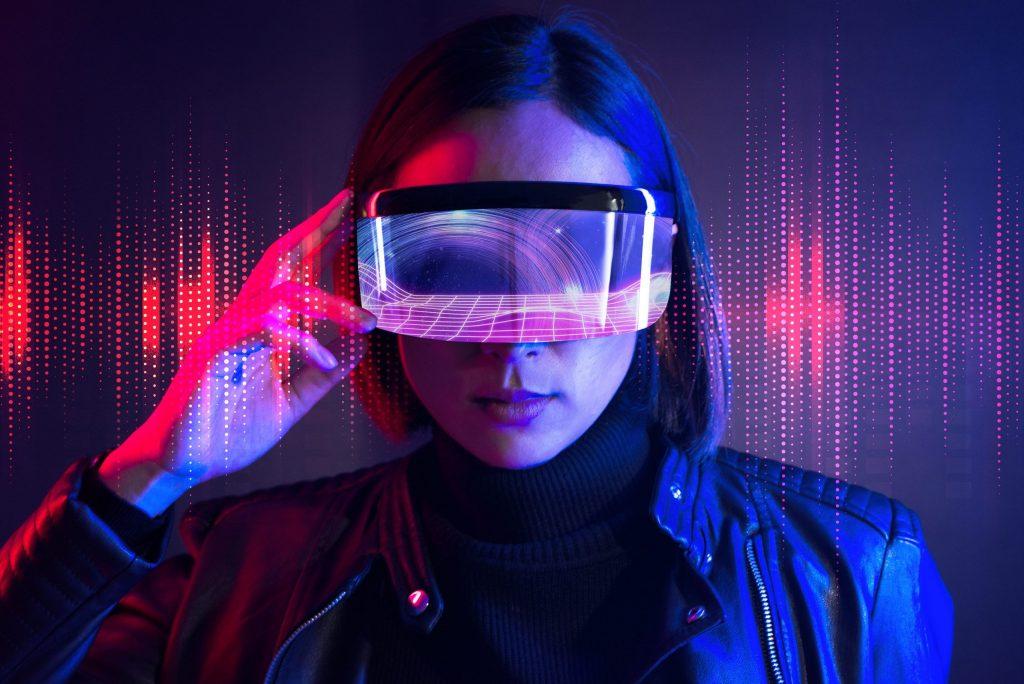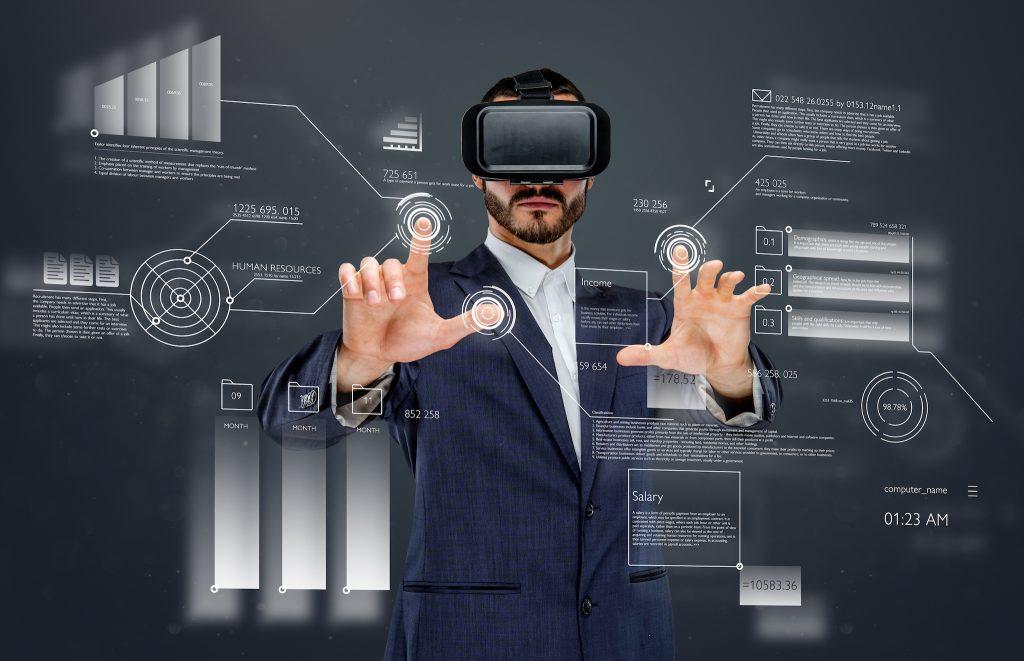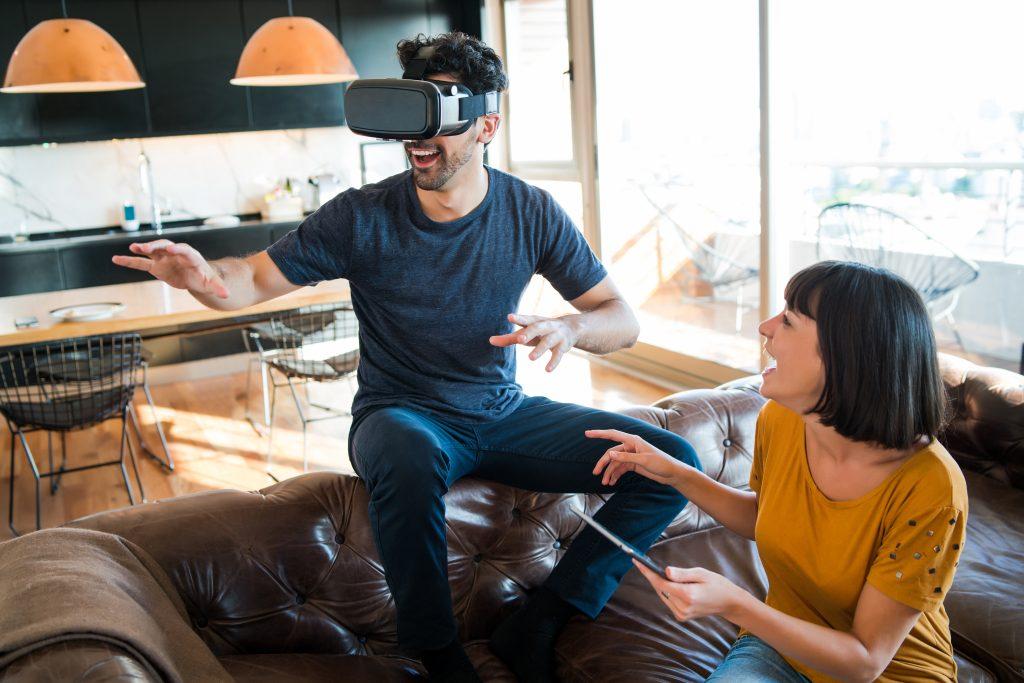Understand what is the metaverse and get new insights and opportunities in the new virtual universe
Introduction: What is the metaverse?
The metaverse is a term that has gained significant attention in recent years. It refers to a shared virtual environment that encompasses various digital spaces, allowing users to interact with one another, engage in immersive experiences, and participate in a thriving digital economy. In this comprehensive guide, we will dive deep into the concept of the metaverse, its evolution, key components, the role of blockchain and cryptocurrency, and the opportunities and challenges it presents.
The term “Metaverse” gained widespread popularity after Facebook changed its branding to Meta in October 2021 and announced plans to invest no less than $10 billion in the idea that year. Other tech giants such as Google, Microsoft, Nvidia, and Qualcomm are also investing vast sums of money into the concept. McKinsey & Company, a management consultancy, has made a bullish prediction that the Metaverse economy may hit $5 trillion by 2030, with e-commerce expected to be the dominant force. Additionally, gaming, entertainment, education, and marketing in the Metaverse are expected to become crucial sectors.
The evolution of the metaverse
The concept of the metaverse can be traced back to the 1992 science fiction novel “Snow Crash” by Neal Stephenson. Since then, the idea has evolved alongside advancements in technology, including the rise of the internet, virtual reality (VR), augmented reality (AR), and blockchain technology.
Interoperable metaverse
Certain technologies that facilitate entry into this digital world, such as virtual reality headsets and augmented reality glasses, are undergoing rapid development. However, other crucial elements of the metaverse, such as sufficient bandwidth, interoperability standards or compatibility protocols, may be several years away from implementation or may never come to fruition.
The internet: Foundation of the metaverse
The internet set the stage for the metaverse by enabling global connectivity and the exchange of digital information. With the advent of Web 2.0, users could create and share content, participate in online communities, and collaborate in real-time.
The idea of the metaverse is a virtual, shared space that merges the digital and physical worlds, allowing people to interact in real time in a fully immersive environment (real-time rendered). It is a vision of a future internet that integrates augmented reality (AR) and virtual reality (VR) technologies, creating a seamless experience where people can connect and engage with each other and digital objects as if they were in the same physical space. The metaverse is often seen as a next-generation internet, where users can explore, create, and interact in ways that were previously impossible.
Virtual and augmented reality: Immersive experiences
VR and AR technologies have played a crucial role in the development of the metaverse by offering immersive experiences that blur the lines between the physical and digital worlds. VR, or virtual reality, technology allows users to enter a completely simulated environment that feels entirely real. By donning a VR headset, users can experience everything from walking through a virtual forest to exploring the surface of Mars. This technology has been crucial in developing the metaverse because it allows users to fully immerse themselves in a digital world.
As such, VR technology can create a sense of “presence” – the feeling of being in a different physical location. AR, or augmented reality, technology, on the other hand, overlays digital information onto the real world. This can include everything from smartphone apps that allow users to see virtual graffiti on real-world buildings to “smart glasses” that display information about the world around you as you look at it. By blending physical reality with digital information, AR technology allows users to view the world through a new lens – one that can highlight specific details or provide additional context.
Together, VR and AR technology are integral to the development of the metaverse because they enable users to fully immerse themselves in a digital world while still retaining a connection to the physical one. By allowing users to explore and interact with digital environments in a natural and intuitive way, these technologies have the potential to revolutionize the way we interact with each other and with the world around us. As such, they will play an important role in shaping the future of the metaverse.
These technologies enable users to interact with virtual objects, environments, and avatars, creating a sense of presence and engagement.
Blockchain: Building a decentralized digital economy in the metaverse
Blockchain technology has contributed significantly to the metaverse by providing a decentralized infrastructure for digital assets, identities, and ownership. Using blockchain technology, users can securely store their digital assets, including virtual land, avatars, and other in-game items, and have full ownership and control over them. This eliminates the risk of assets being lost or stolen, and allows users to easily trade and transfer their assets with other users within the metaverse.
Additionally, blockchain technology enables the creation of unique digital identities for each user, which can be used for authentication and verification purposes within the metaverse. This improves security and prevents identity theft. Furthermore, blockchain technology allows for the creation of decentralized marketplaces within the metaverse, where users can buy and sell digital assets using cryptocurrencies and other tokens. This creates a more transparent and fair economy where transactions can be easily monitored and verified.
With the integration of blockchain, users can securely and transparently manage their virtual assets, engage in transactions, and establish trust within the metaverse.
Key components of the metaverse
The metaverse comprises several interconnected components, including:
Virtual worlds
Virtual worlds are digital environments where users can explore, interact, and create content. Examples include gaming platforms like Fortnite, social platforms like VRChat, and virtual reality experiences like those offered by Oculus Rift.
Avatars
Avatars are digital representations of users in the metaverse, allowing them to interact with other users and the virtual environment. Avatars can be customized to reflect a user’s identity or preferences and can be used to express emotions, communicate, and participate in various activities.
Digital assets
Digital assets are virtual goods that users can create, own, and trade within the metaverse. These can include virtual real estate, clothing, art, and collectibles. Digital assets can be tokenized on a blockchain, providing users with proof of ownership and enabling secure transactions.
Exploring the metaverse economy
The metaverse economy is a thriving digital ecosystem that enables users to create, buy, sell, and trade digital assets, as well as participate in various experiences and services. This economy is built on several key elements:
Virtual real estate
Virtual real estate refers to digital spaces within the metaverse that users can own, develop, and monetize. These spaces can be utilized for various purposes, such as hosting events, displaying art, or creating immersive experiences.
Virtual goods and services
The metaverse is a marketplace for virtual goods and services, ranging from clothing and accessories for avatars to tools and resources for building and customizing virtual environments. Users can purchase these items using digital currencies or tokens.
Decentralized finance (DeFi)
DeFi plays an important role in the metaverse economy by enabling users to access financial services, such as lending, borrowing, and trading, in a decentralized and transparent manner. This empowers users to manage their digital assets and generate value within the metaverse.
In-App experiences
In-app experiences are an integral part of the metaverse economy, as they offer users the opportunity to engage in various activities, such as gaming, social interactions, and immersive storytelling. These experiences can be monetized through subscriptions, in-app purchases, or advertising.
The role of blockchain and cryptocurrency
Blockchain technology and cryptocurrencies play a significant role in the metaverse by providing a secure, transparent, and decentralized infrastructure for digital assets and transactions.
Tokenization
Tokenization is the process of representing digital assets as tokens on a blockchain. These tokens can represent a variety of assets, such as currency, commodities, or even real-world assets like property or artwork. Tokenization allows for these assets to be represented as digital tokens on a blockchain, which can then be traded or transferred in a secure and decentralized manner. This can greatly increase liquidity and accessibility for assets that were previously illiquid or difficult to transfer. In addition, tokenization can also enable new forms of asset ownership and investment, such as fractional ownership of real estate or the creation of new investment funds composed of different types of tokens.
This allows users to establish ownership, securely trade assets, and verify the provenance of digital goods within the metaverse.
Decentralized autonomous organizations (DAOs)
DAOs are organizations that operate on blockchain technology, allowing for decentralized governance and decision-making. In the context of the metaverse, DAOs can be used to manage virtual spaces, digital assets, or even entire virtual communities.
Smart contracts
Smart contracts are self-executing agreements encoded on a blockchain that enable secure and transparent transactions within the metaverse. These contracts can be used to automate processes, such as the sale and transfer of digital assets, as well as facilitate interactions between users and virtual environments.
NFT
The relation between Metaverse and NFT is that NFTs (Non-Fungible Tokens) are a type of digital asset that can be bought, sold and traded on Metaverse platforms. Metaverse is a virtual world or space where users can interact with each other and with virtual objects. NFTs can represent digital art, music, videos, or even virtual real estate and avatars within Metaverse. The blockchain technology powering NFTs allows for unique ownership and provenance of these digital assets, which can be valuable in Metaverse where virtual objects have value. As such, NFTs are seen as a key component of the Metaverse economy.
Opportunities and challenges of the metaverse
The metaverse presents numerous opportunities and challenges for individuals, businesses, and society as a whole. Some of these include:
Opportunities
- New business models and revenue streams: The metaverse offers businesses the chance to tap into new markets, such as virtual goods, services, and experiences.
- Enhanced creativity and collaboration: The metaverse enables users to create, share, and collaborate in unique and immersive ways, fostering innovation and the exchange of ideas.
- Social interaction and community building: The metaverse facilitates the formation of new social connections and communities, transcending geographical boundaries and providing a sense of belonging.
Challenges
- Digital divide and accessibility: As the metaverse becomes more integral to daily life, ensuring equitable access to technology and digital resources will be essential.
- Security and privacy concerns: The vast amount of personal data generated within the metaverse raises concerns about user privacy and the potential for misuse.
- Ethical and regulatory considerations: The rapid growth of the metaverse introduces complex ethical and regulatory challenges that will need to be addressed by stakeholders, including governments and industry leaders.
Preparing for a future in the metaverse
As the metaverse continues to evolve, individuals and organizations should consider the following steps to prepare for a future in this emerging digital landscape:
Education and skill development
Acquiring relevant skills and knowledge in areas such as virtual reality, augmented reality, blockchain technology, and digital asset management will be essential for thriving in the metaverse. Individuals should seek educational opportunities, both formal and informal, to develop these competencies.
Building a digital presence
Creating and maintaining a digital presence in the metaverse, including developing a virtual identity, establishing a network of connections, and engaging in digital communities, will be crucial for personal and professional success.
Understanding the digital economy
Developing a deep understanding of the metaverse economy, including virtual goods and services, decentralized finance, and tokenization, will enable individuals and organizations to identify and capitalize on opportunities within the digital landscape.
Addressing ethical and regulatory issues
Staying informed about the ethical and regulatory challenges associated with the metaverse, and actively participating in discussions and initiatives aimed at addressing these issues, will be essential for ensuring a sustainable and equitable digital future.
Conclusion
The metaverse represents a transformative shift in the way we interact with digital environments, engage with others, and participate in a rapidly evolving digital economy. As this virtual landscape continues to expand and mature, it presents both significant opportunities and challenges for individuals, businesses, and society at large. By understanding the key components of the metaverse, the role of blockchain technology and cryptocurrency, and the strategies for navigating this new frontier, we can be better prepared to embrace the potential of the metaverse and shape a more connected, creative, and inclusive digital future.
FAQs
How has Mark Zuckerberg influenced the growth of the metaverse?
Mark Zuckerberg, the CEO of Meta Platforms Inc. (formerly Facebook), has played a significant role in the growth of the metaverse. Under his leadership, the company has heavily invested in virtual reality and augmented reality technologies, most notably through the acquisition of Oculus VR in 2014. Zuckerberg’s vision for the future of social interaction and digital experiences aligns with the development of the metaverse, and his company’s resources have contributed to advancements in VR headsets, social VR platforms, and metaverse infrastructure.
What are some popular VR headsets for exploring the metaverse?
Several VR headsets have become popular for exploring the metaverse, offering users immersive experiences in various virtual worlds. Some of the leading VR headsets include:
- Meta Quest 2 and Meta Quest Pro: A wireless, standalone headset developed by Meta Platforms Inc.
- PlayStation VR 2: A VR headset designed for use with the PlayStation gaming console.
- HTC Vive: A premium PC-based VR headset offering high-quality visuals and tracking.
- Valve Index: A high-end VR headset developed by Valve Corporation, known for its precise tracking and wide field of view.
How is Roblox contributing to the development of metaverses?
Roblox is a popular online platform that allows users to create, share, and explore user-generated 3D worlds. With millions of active users and a vast library of experiences, Roblox has become a significant player in the development of metaverses. The platform enables users to build their virtual environments using the Roblox Studio, fostering creativity and collaboration among its community. Additionally, Roblox has integrated its virtual economy, where users can create, buy, and sell digital assets, further promoting the growth of metaverse concepts.
What are some key differences between various metaverses?
Metaverses can vary in several aspects, including their focus, user experience, and underlying technology. Some key differences include:
- Purpose: Some metaverses may emphasize gaming and entertainment, while others may focus on social interaction, education, or professional collaboration.
- Immersion: The level of immersion and realism can vary between metaverses, with some offering highly detailed graphics and environments, and others adopting more stylized or abstract visuals.
- Accessibility: Metaverses can differ in their accessibility, with some being designed for specific devices (e.g., VR headsets) and others being accessible via web browsers or mobile devices.
- Economic models: The virtual economies within metaverses can differ, with some utilizing cryptocurrencies and blockchain technology, while others may employ more traditional in-game currencies and transaction systems.
What skills and tools are essential for metaverse development?
Metaverse development requires a diverse skill set and an understanding of various tools and technologies. Some essential skills and tools include:
- Programming languages: Proficiency in languages like C++, C#, and JavaScript is crucial for developing metaverse applications and experiences.
- Game engines: Familiarity with game engines, such as Unity and Unreal Engine, is essential for creating interactive virtual environments.
- 3D modeling and animation: Skills in 3D modeling and animation software, like Blender, Autodesk Maya, or 3ds Max, are necessary for designing assets and characters.
- Virtual reality and augmented reality development: Knowledge of VR/AR SDKs and frameworks, such as Unity XR and ARCore/ARKit, is vital for creating immersive metaverse experiences.
- Blockchain technology: Understanding blockchain concepts, smart contracts, and decentralized applications can be beneficial for developing metaverse economies and managing digital assets.





